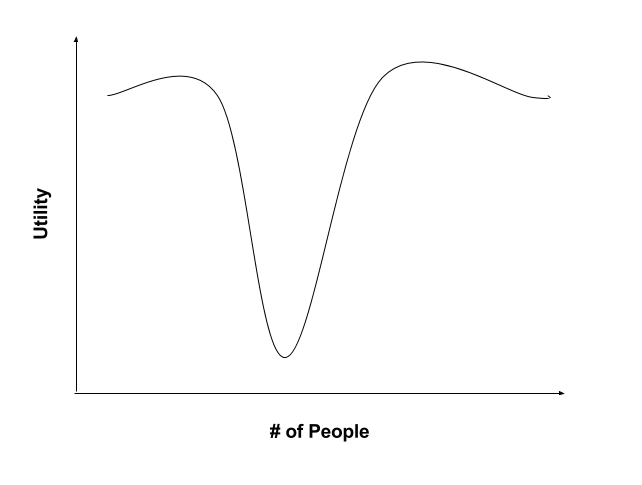1,000 True Fans
“1,000 True Fans” is an essay that I read years ago and has stuck with me ever since. The core message of the essay is that in order to be successful in life as a creator, such as an artist, designer or software engineer, you only need about 1,000 true fans (I believe 1,000 is meant to be interpreted as within an order of magnitude, meaning >= 1000 and <= 10,000) to support yourself. Importantly, the author describes the characteristics of a true fan:
A True Fan is defined as someone who will purchase anything and everything you produce. They will drive 200 miles to see you sing. They will buy the super deluxe re-issued hi-res box set of your stuff even though they have the low-res version. They have a Google Alert set for your name. They bookmark the eBay page where your out-of-print editions show up. They come to your openings. They have you sign their copies. They buy the t-shirt, and the mug, and the hat. They can’t wait till you issue your next work. They are true fans.
In other words, the author describes that a true fan is someone who is obsessed with your work; they see deep value in your work and they take action to support you.
I find the challenge of attracting 1,000 true fans to be a much more attractive path than swinging for the fences in every at-bat you have in life. As the author describes, “1,000 true fans is an alternative path to success other than stardom.” and “It’s a much saner destiny to hope for.” And through this process, the creator often develops close personal connections with their fans, a much more appealing lifestyle to me than being loosely connected to everyone.
But is that all, should a creator call it a day when they attract 1,000 true fans? Of course not. This is merely a starting point. A creator with 1,000 true fans will likely have many more loosely interested fans. The takeaway I see in this essay relates to a graph that Paul Graham often draws for aspiring startup founders:
 The leadership at Y Combinator often draws this graph to persuade founders that they should initially build something that is extremely useful for a small number of people. This advice typically comes along with a warning that the tar pit of startup ideas includes any idea that is just a little bit useful to a lot of people; the worst path of action for a creator making new things is to build a product that no discernible group of people couldn’t live without.
The leadership at Y Combinator often draws this graph to persuade founders that they should initially build something that is extremely useful for a small number of people. This advice typically comes along with a warning that the tar pit of startup ideas includes any idea that is just a little bit useful to a lot of people; the worst path of action for a creator making new things is to build a product that no discernible group of people couldn’t live without.
Once a founder attracts their 1,000 true fans, they have validation of their ideas and can expand horizontally to provide deep utility to a wider group of people. Most of the best companies today started this way, such as Google who originally started with search, and now has expanded into dozens of other product categories.
As I think about making new things in 2017, I hope to keep in mind the critical support that a group of “1,000 True Fans” can provide to creators of any kind.
